Rasputin: The Mad Monk (1966)
Directed by: Don Sharp
Written by: Anthony Hinds
Starring: Barbara Shelley, Christopher Lee, Francis Matthews, Richard Pasco
UK
AVAILABLE ON BLU-RAY AND DVD
RUNNING TIME: 91 min
REVIEWED BY: Dr Lenera, Official HCF Critic
Russia, the early 20th century. Grigori Yefimovitch Rasputin is a monk who possesses seemingly unnatural powers of healing, but who also drinks, brawls, and has an insatiable sexual appetite. Expelled from his monastery, he heads for St. Petersburg and in a pub meets struck off, alchoholic doctor Boris Zargo, and then Sonia and Vanessa who are ladies-in-waiting to the Tsarina, plus their brothers Peter and Ivan. Rasputin wants to penetrate to the peak of Russian high society, and his first step is to seduce Sonia. He then places her in a trance so she can injure the Tsar’s heir so that Rasputin can be called to court to heal him….
It’s odd watching Rasputin The Man Monk so soon after the previous Hammer film Dracula: Prince Of Darkness, because it not only features a lot of the same cast members but also uses the same sets, often with only the minimum attempt at redressing. Roughly belonging in the same ‘history with horror’ group as The Stranglers Of Bombay and – just about – The Terror Of The Tongs and The Pirates Of Blood River, it’s one of several films where Hammer really rather overstretched themselves. There’s no way that the studio would have been able to afford a convincing evocation of Tsarist Russia and especially the Tsar’s palace in St. Petersburg, but it’s easy to see why they opted to do a film about Russia’s Greatest Love Machine [as Boney M tells us], as he’s such a dark and fascinating real life character absolutely tailor made for Christopher Lee. He gives quite possible his best ever performance for Hammer in this film, and remains the greatest screen Rasputin [though both Tom Baker and Alan Rickman come close], even if the movie falls short in quite a few ways, most notably because it bears very little resemblance to what actually happened, as if they had the character of Rasputin and the basic situation, then thought up a totally new story – which is almost what actually happened, except that it wasn’t really the studio’s fault.
The first Rasputin film was Rasputin And The Empress in 1932. Prince Felix Yousoupoff, who had been one of the men who killed Rasputin [or maybe I should say tried to – supposedly after surviving death attempts by poison and bullets he died of drowning, though many have refuted this], brought a lawsuit against the filmmakers because it depicted his wife Irina being seduced by Rasputin. Hammer planned to make The Sins Of Rasputin in 1961, but legal concerns caused Anthony Hinds to rewrite the script and Yousoupoff signed off every page as an indemnity against a law suit, but certain alterations were still made during shooting, taking the story further and further from what really happened. As a child in the 1920’s, Lee had actually met Yousupoff and a co-conspirator Dimitry Pavlovitch. The film was shot immediately after Dracula: Prince Of Darkness. Scenes in a monastery were cut from the script because Dracula: Prince Of Darkness went over budget, and because director Don Sharp was taking too long with the production. Two other scenes; Sonia killing herself, and part of the final fight scene, were shot but went unused before they were edited, for reasons unknown. Also removed was a final shot of the dead Rasputin lying on the ice with his hands held up to his forehead in benediction as it was considered controversial for religious reasons. The BBFC cut nearly half a minute, removing most of the Rasputin/Sonia love scene and shots of a face disfigured by acid. The double bill with Dracula: Prince Of Darkness did great business. In 1976 Lee met Rasputin’s daughter Maria in 1976, who told him that he had her father’s “expression”. I guess that was a complement.
Rasputin is first seen saving the life of an innkeeper’s daughter in quite an effective scene where the cutting between Rasputin’s face and his hands over the woman’s face, plus Don Banks’ evocative scoring, go some way to conveying Rasputin’s great power. The innkeeper is hugely grateful, and doesn’t seem too bothered when Rasputin holds a party, gets through four bottles of wine and dances with his daughter, but her boyfriend isn’t happy at all when he finds his girl rolling in the hay with the insatiable monk. A fight ensures where Rasputin cuts the other’s hand off [cue one of Hammer’s better looking severed hands, though it’s still hardly great]. He’s then arrested and taken to a monastery where Rasputin protests that he is sexually immoral because he likes to give God “sins worth forgiving” , which is actually based on Rasputin’s rumoured connection to Khlysty, an obscure Christian sect which believed that those deliberately committing fornication, then repenting bitterly, would be closer to God [why isn’t it better known and popular today?]. Rasputin then sets off for St. Petersburg and you’ve got to laugh when his coach driver has the unmistakable voice of Michael Ripper but it’s clearly not him on screen, and when the driver goes on about the magnificence of St. Petersburg but you know that you’re not going to see much of that, though there’s a shot of a lavish ball which looks like it’s from another film, and it actually is: it’s from Anastasia, and if you look hard enough you can even spot Ingrid Bergman!
Rasputin, who never has any money, starts to live in the house of heavy drinking, struck off [we never learn what for] doctor Boris Zargo, and Lady Sonia is immediately smitten by him and the two fall into bed in quite a steamy scene for 1966 in its uncut versio, ending with the naked Sonia throwing off the bed sheet at the camera. The hypnotised Sonia then injures the Tsarina’s [we never see or even hear of a Tsar] kid so Rasputin can come to court and heal him, and thereby become an important figure in the palace. Though some of the characters are loosely based on real people, I wish that we’d seen some of Rasputin’s reputed influence on political matters, but the emphasis is on Rasputin’s relationship with Sonia which progresses in a very similar way to Lee’s and Shelley’s relationship in their Dracula film. There’s an unusually intensely acted scene where Rasputin tells Sonia to bugger off and fetch her friend Vanessa. Sonia totally loses it, something convincingly played by Barbara Shelley, and the usually restrained Lee loses it and starts yelling and shouting. The assassination sequence has its moments, the best being the genuinely unnerving way the poisoned Rasputin crawls along the floor, but it’s obvious that footage is missing, with Ivan clean and tidy in one shot and then dishevelled in the next.
Action packed at the beginning and at the end but relying more on talk in between, Rasputin The Mad Monk does move reasonably well but it probably wouldn’t be even half the film it is without Lee. With hindsight, it seems astonishing that Hammer thought they could get away with Rasputin emerging from the hut the two couples almost stayed in in Dracula Prince Of Darkness, or the child falling into the ice where Dracula perished, or much of the interior stuff [which is most of the film] seemingly taking place in Castle Dracula. A clearly struggling Bernard Robinson does his best and provides a few reasonably opulent rooms, and decent paintings give a slight impression of a city outside the windows, though a shot or two of the outside of the palace would have helped. Sharp directs with some style here and there, and is especially strong handling a couple of suspense sequences. The first is especially memorable and quite innovative, as Zargo goes to kill Rasputin in his darkened house and the faces of the two men loom out of the blackness several times as they confront each other. And the generally average script does give us a few intended chuckles. A rotund, sweet-scoffing patient waiting in Rasputin’s surgery demands to see him and receive her treatment. “And you shall have it maam, stop eating like a pig and take more exercise” is the probably very accurate reply.
Lee projects so much power and evil but also clearly relishes the chance to cut loose as he leers, laughs, boozes….even dances! Even if you don’t like Hammer’s films, if you do like this much missed actor than you just have to watch him in this movie. Outside of Lee, Richard Pasco, so good in The Gorgon, is also very strong as the alcoholic Zargo [there’s a hell of a lot of drinking in this film and even the ladies join in]. The score by Don Banks is the best he ever did for Hammer, with strong, dramatic themes augmented by more avant garde patterns in the background. Swirling vibrophones are highly effective in the hypnotism bits. Overall Rasputin The Mad Monk is solid fare as long you forget about history, and if you can’t then the 1996 TV movie is probably a better watch and is possibly superior altogether except that it doesn’t of course have that Hammer style – though the definitive movie about Rasputin hasn’t yet been made and I don’t know why. For a start, it’ll be easy to write as they wouldn’t now have to invent anything.
Rating: 










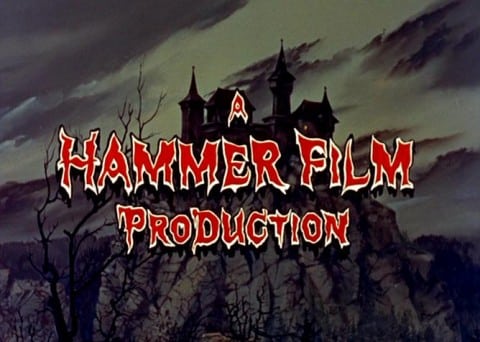
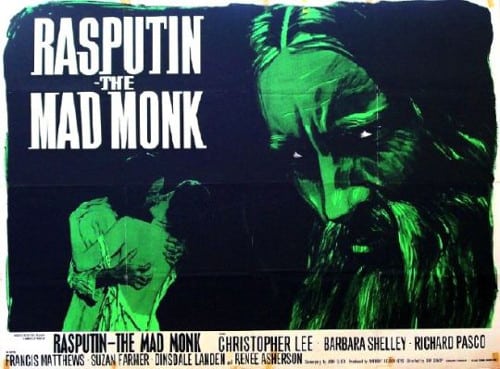
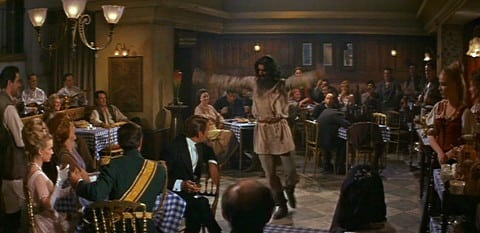
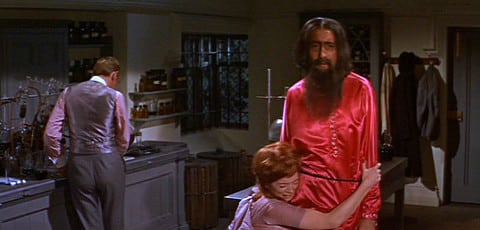

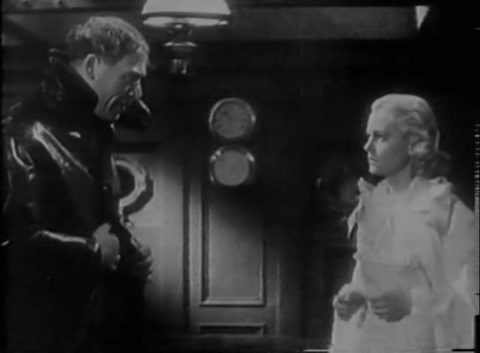
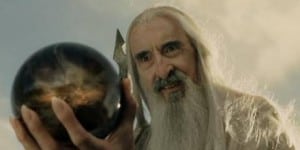
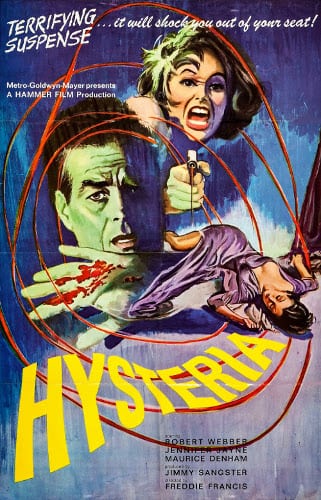
Be the first to comment